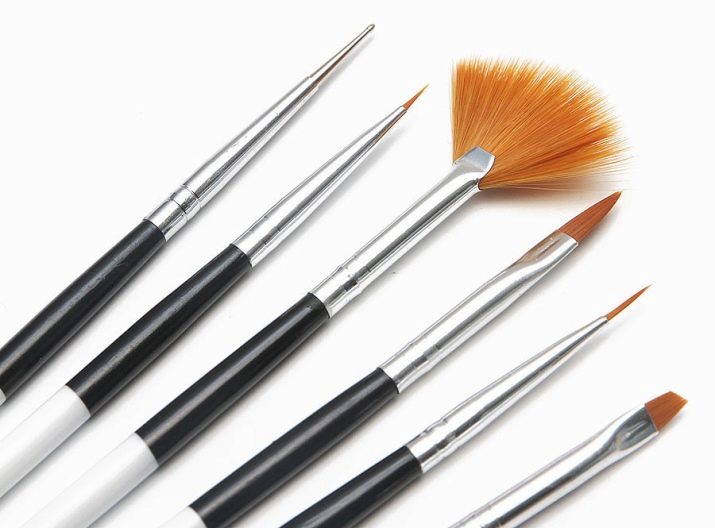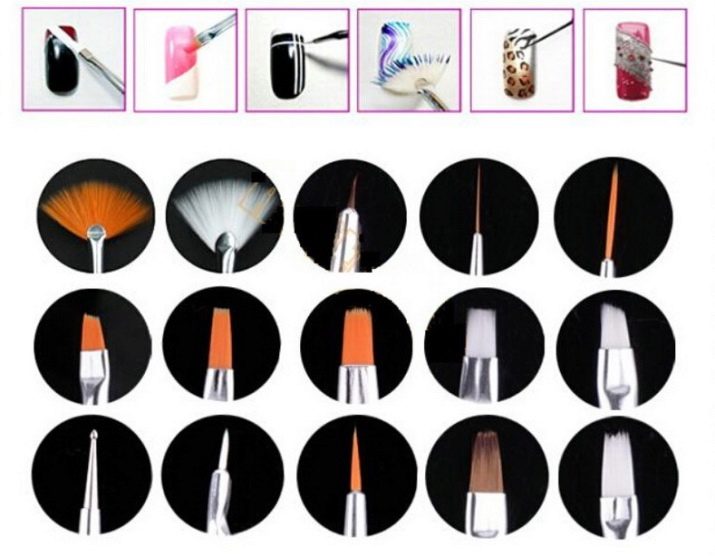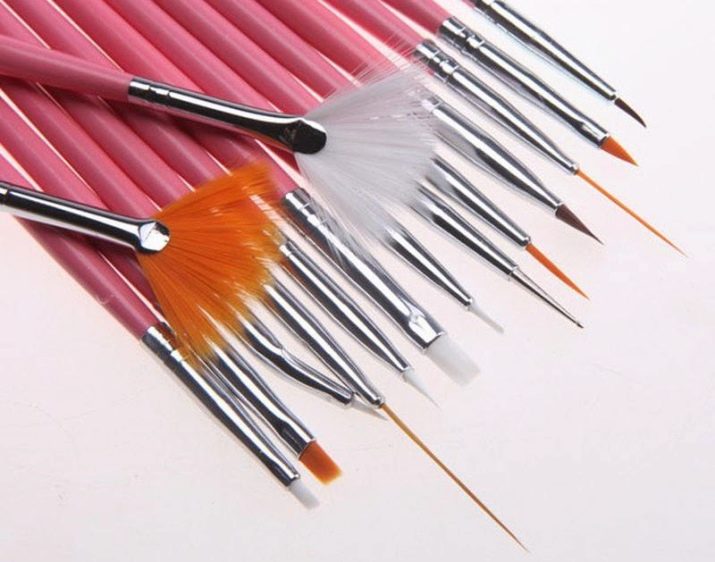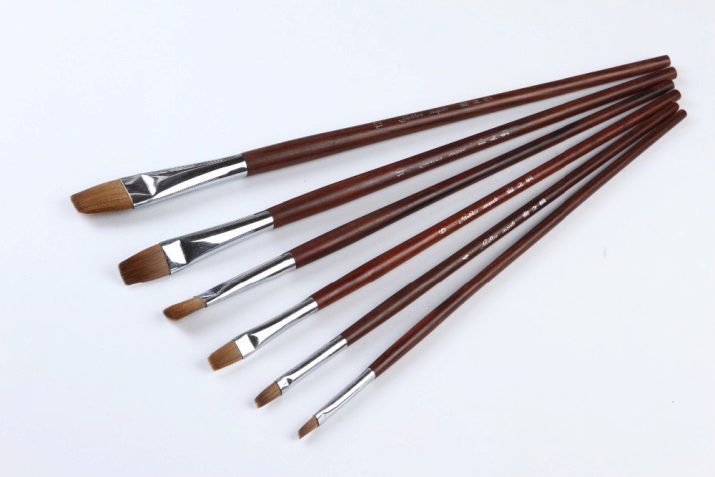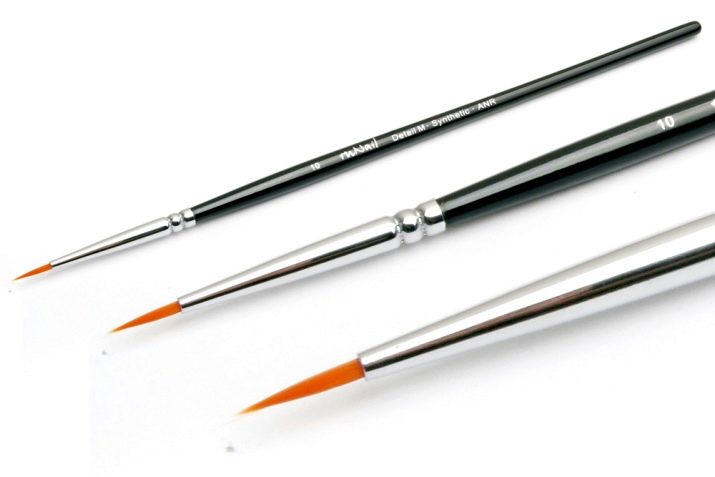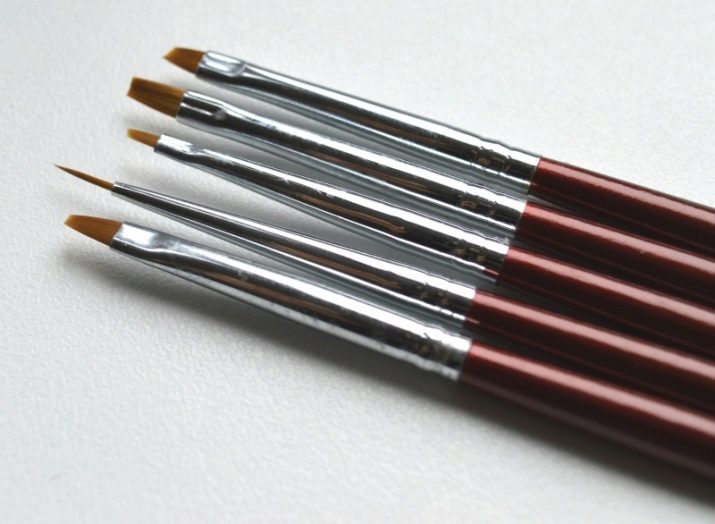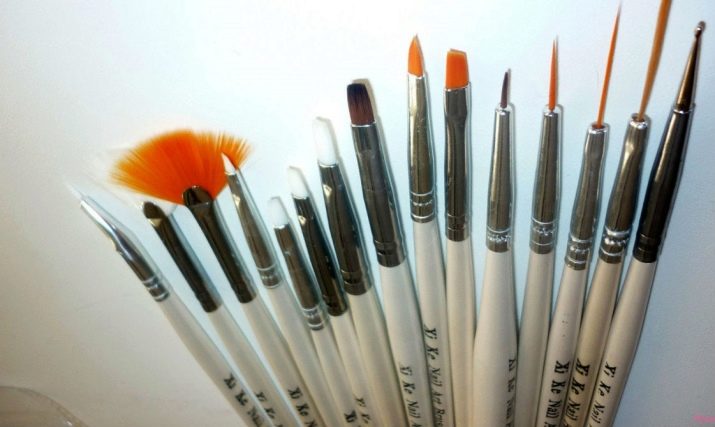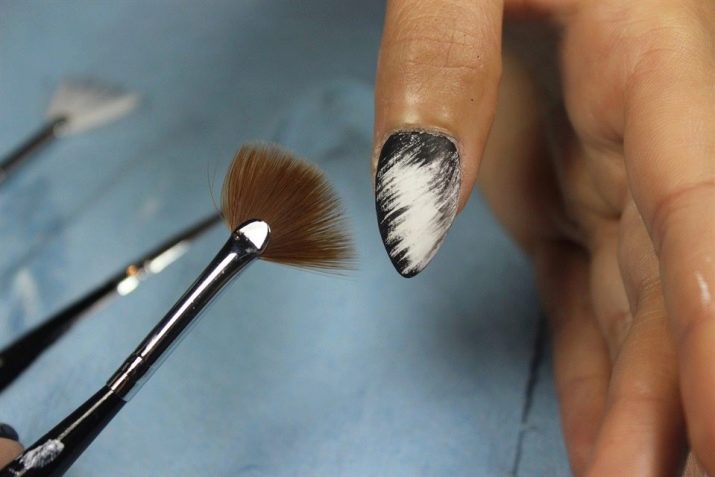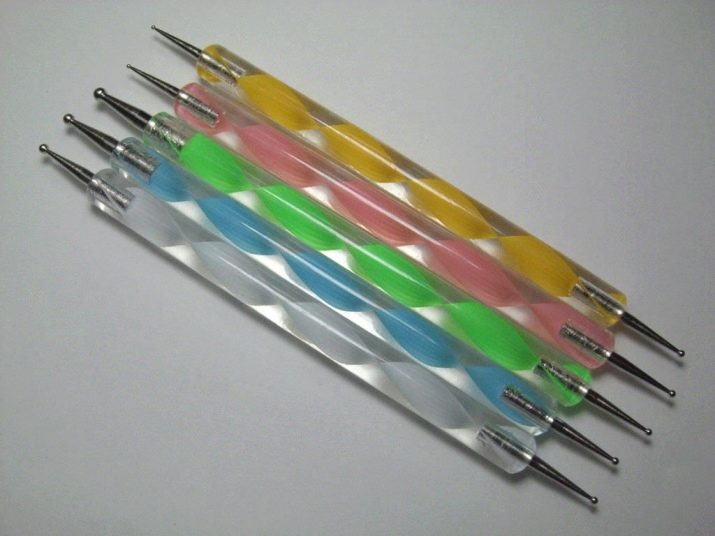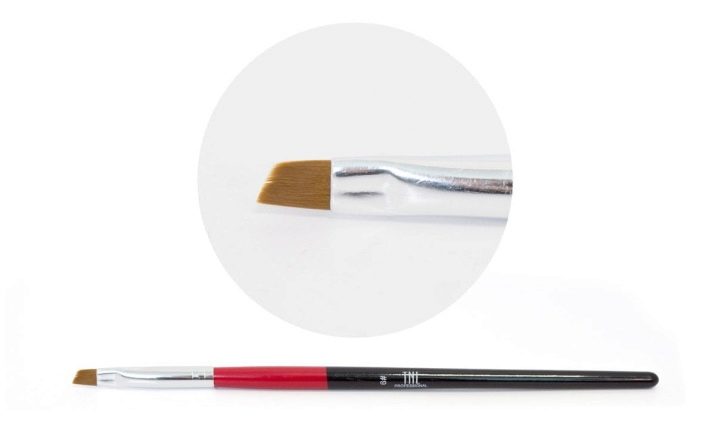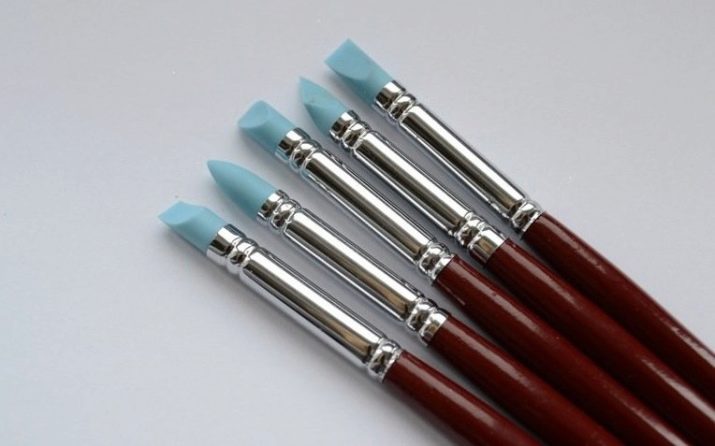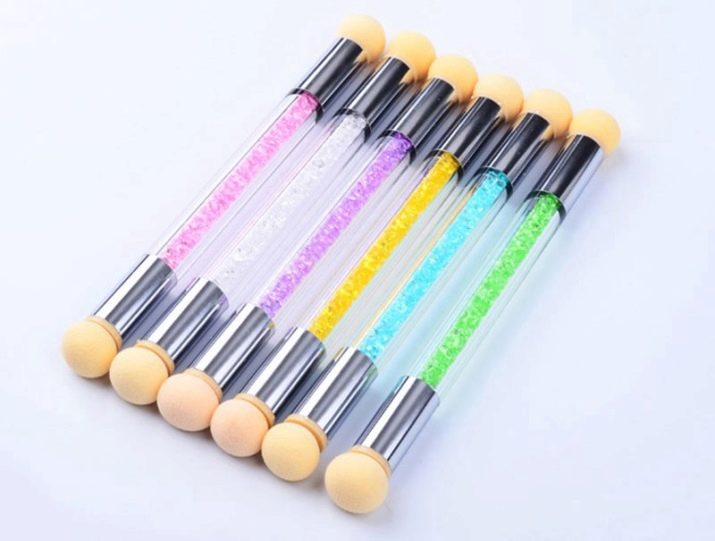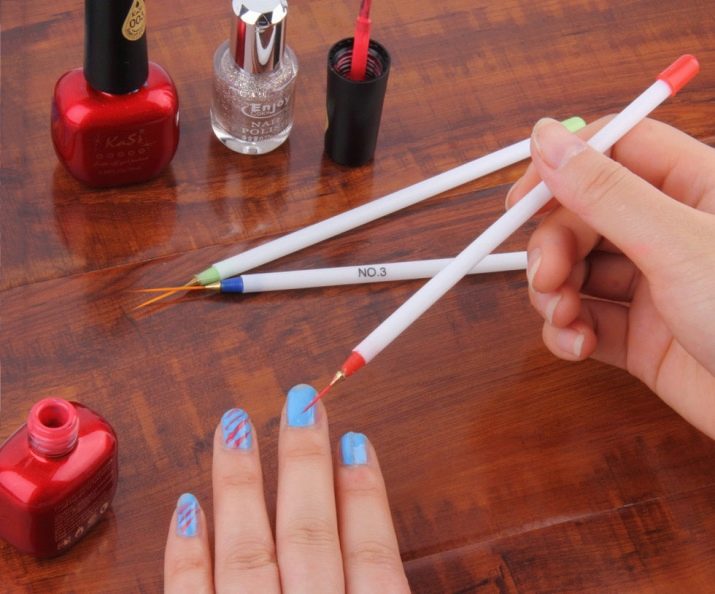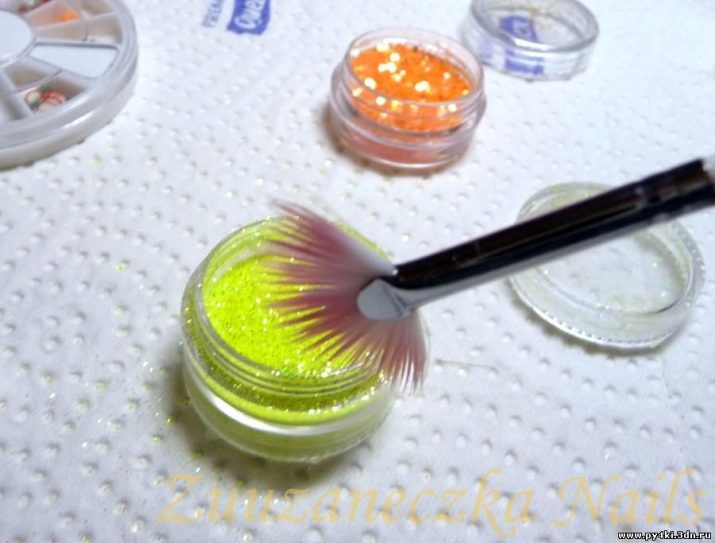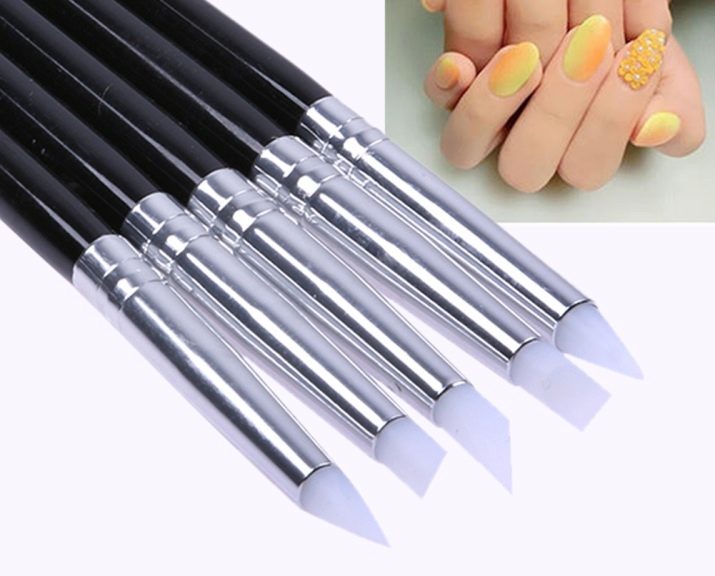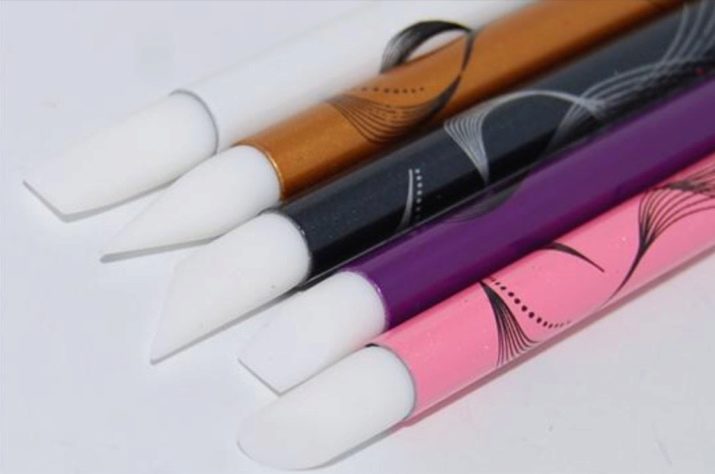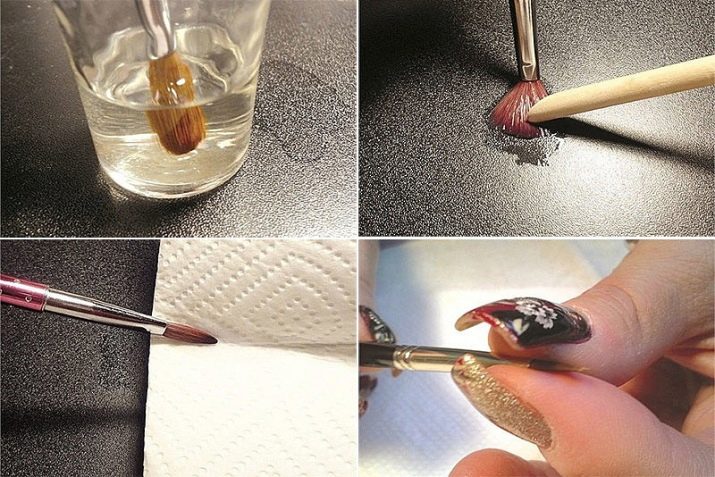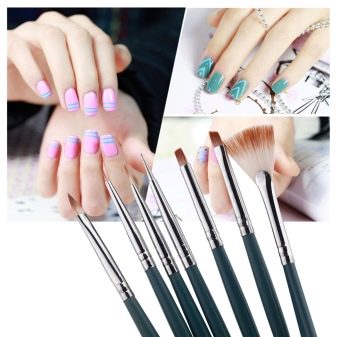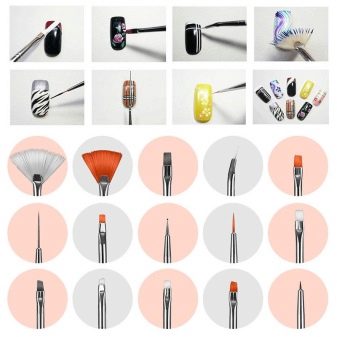Brushes for manicure: types, features of drawing and care

Looking at the beautiful design of the manicure, few people think about exactly what tools the master created it. It seems to us that the basis of such success is the skill and artistic skills of a specialist. In fact, half of the success lies in the selection of the right manicure brushes. This is what often allows drawing without special skills. Let's take a closer look at this issue and find out what kind of manicure brushes are, what are their features, how they paint, and what you need to know about caring for tools.
Features
Brushes for manicure are different from those analogues that are used to paint on paper or canvas. Their working part can consist of different materials, softness and elasticity will depend on it. Pile can be natural and artificial, in addition, the shape of the brush may differ, which will determine the type of use. With proper care, each such tool is capable of serving the master for at least two years.
We do not reflect on the fact that all brushes used by nail service professionals have their own purpose. Some of them are used directly to design and create a specific pattern. Variants of natural origin, designed to work with acrylic nail products, can be made of sable, marten or sheep hair. Their form can be very diverse.
Those who use it while working with the gel are made of synthetic nap. In addition to a reasonable price, such brushes are easy to maintain, they are durable. Such brushes are good for detailed drawing.
Given that the gel does not dry without a special lamp, the master has time to timely clean the brush. As for acrylic paints, it is important to note that after drying they complicate the washing of the brush, while with wet paint you can immediately wash the brush with ordinary cold water.
For convenience, each nail brush has its own number from two zeros to eight. This nuance indicates the thickness of the pile: the larger the brush number, the thicker it is. The choice of the right tool depends on the specific design, the thickness of the lines and the complexity of the image itself. For example, options more than zero are more commonly used for abstraction. When you need tiny items, take a brush of 0 or 00.
Varieties
There are several basic options, and each of them has its own nuances.
- Liner created for drawing straight and curved lines, as well as strokes. You can draw stripes, a cage, as well as uneven lines under the zebra skin. Liners are small, they can have different lengths of pile.
- Shader or shader brush It is a flat model, which most often has a square or blunt tip. It can draw large print elements, including two shades at once, applied on different lateral sides of the bristles.
- Fan brush and the truth looks like an Asian fan. It allows you to create several lines at the same time, it is used when an airbrush or gradient effect is needed. This tool is used when you need to darken the background, apply glitter.
- Dots only conventionally referred to brushes, because this tool at the end has not a nap, but a metal ball.With its help they create polka-dot prints; they use dotted techniques to draw popular ethnic ornaments today.
- Bevel brush it is better to use a flat one in the technique of a single stroke, in which contrast colors are applied on different sides and draw petals or leaves with one motion, achieving a smooth play of shades. The bristles of the tassel are cut at a 45 degree angle.
- Petal It is considered the most simple and common tool. Often it is used not only for drawing, but also for applying the base and trimming the edge of the coating at the base of the nail plate. The same brush creates an acrylic stucco design.
- Silicone options are an alternative to the usual instruments with bristles. Instead of bristles, they have a silicone tip. Such brushes are provided for working with coatings of various types, including ordinary and hybrid varnish, as well as gel and acrylic. The same tools are used to clean the cuticle. These devices are unique in that they absolutely do not absorb the paint used, which greatly simplifies the care of them.
What and when to paint?
As for the most convenient option for beginners, these are silicone shaders. However, it is impossible to clearly identify any option, because the degree of convenience will depend on the type of material used in the work. Masters believe that in working with acrylic is easier to use options with natural hair. If gel lacquer is used as a paint, it is also easier to work with it with a brush made from natural bristles. For greater efficiency modeling gel is to use the option with a synthetic nap.
How to use?
Depending on the type of manicure brush, the method of their use may differ. For example, if you want to perform artistic painting, choose a rather thin brush of a round type. It can be short or long, with a pile up to two centimeters. They draw these tools like this: they paint on the tip, put a point in the right place and, without lifting, draw a line in the right direction. So create curls, laces, and even contours.
When you need to work out any detail, try to use a long brush for drawing. The liner or planner differs from the analogue with a short nap in that it draws more paint onto it, which allows it to complete the line without adding working material. It is very convenient and eliminates the risk of marriage or double lines in one place.
Fan brush is easy to use: it is needed to perform a gradient or an abstract pattern, applying glitter, or flock powder. If you need to use tools for applying spangles on the painted surface, they are collected on the brush and gently tapping the nail plate with the right taps. Everything superfluous looks like. When you need to perform an ombre effect, two different colors of paint are drawn on different sides and paint the nail on them, connecting them with a smooth transition. Sometimes, using a fan-shaped brush, they create ordinary stripes, dipping it into paint and painting it on the working background with light touches.
When you need to paint the nail or create a large pattern on it with a flat brush, the pigment is applied to one of its sides. After that, they put it on the edge and by varying the pressure they create a different pattern. Approximately on the same principle draw and skew analogue. As for working with silicone varieties, working with them will require prior application of a pigmented varnish on the prepared nail.
The drawing is created on an undried basis, displaying different lines and patterns with silicone brushes. In fact, they remove the excess paint, due to which the pattern will appear. However, if you want to use a silicone brush to model the gel, you have to work with the corners, the edge or even the whole plane of the variety.
Regardless of the type of design required, the brush should not be pressed too hard.
Nuances of care
The easiest way to care for silicone brushes. In order for them to maintain their working capacity, it is enough to wipe them in time with a usual wet disc or a manicure napkin. It is important to use brushes strictly for their intended purpose - they do not draw on paper. Do not leave brushes in the water, as this may deform them.
If the instrument is slightly disheveled, it is necessary to immerse it in hot water for a couple of minutes. It is necessary to monitor the timely washing - clean the fixtures immediately after work. If you miss the time, the varnish can dry out, then you have to use the liquid to dissolve it, and this is harmful to the structure of the hair.
Extend the durability of the tools can the right choice of palette. It is important that it does not have chipping and roughness, which can cause a gradual abrasion of the pile. Also, rubbing of the brush against the napkin is strictly not allowed. We should not forget that some brushes need treatment with softening cuticle oil.
You can not clean the bristles with a needle or nails. To remove paints using monomer or specialized liquids for the column or synthetics. Keep tools better in the case. Before starting work, the tools previously treated with oil are soaked in water and wiped.
Do not wash the tools with cosmetic oils, shampoo with balm, and dishwashing liquid. It is important to ensure that the brush does not get acrylic dust. Its microparticles clog up the pile, and therefore the working part becomes brittle and brittle. When filing nails need to close the brush wipes, keeping them at some distance.
Silicone varieties are quite resistant to water of different temperatures, they can be treated with alcohol, mineral oils, weakly alkaline solutions. These products can be washed, wiped, subjected to various disinfection. The only thing that can harm them is sterilization. You should also take note of the fact that it is impossible to purposefully prick the working parts of silicone brushes.
Reviews
Manicure brushes for modeling and painting nails are considered a godsend for the design and execution of stucco prints. Both professionals of the nail service, and the beginning masters are sure of it. With their help, you can create unique patterns, displaying thin lines, monograms and openwork patterns exactly and neatly. In the comments left on the forums devoted to nail art, it is noted that the brushes are really able to work wonders, facilitating the work of the master.
However, the masters say that not all tools are easy to use, the reason for which is the razor-wetting of the pile. They note that it is extremely important to select products from manufacturers with a good reputation for high-quality design.
You also need to make sure that in the home set were varieties of different sizes, including option 00. According to professionals, beginners can look at the products for manicure company AVON.
You will learn more about the brushes for nail design, their types and care in the next video.
